How many of you have, or would like to have, a tree with roots like this?
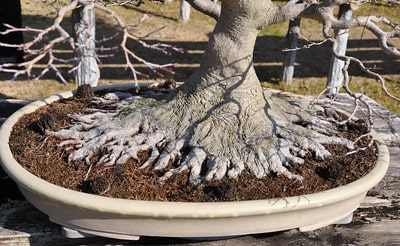
Incredible roots
This Japanese maple is around 25 years old from cutting. And it’s fairly representative of all of the maples in Ebihara’s garden, located just outside of Tokyo, Japan.
I’m currently on a bonsai vacation that coincides with the 83rd Kokufu ten bonsai exhibit, an annual event held at the Metropolitan Art Museum in Ueno Park. Ebihara’s garden was my first stop on the trip.
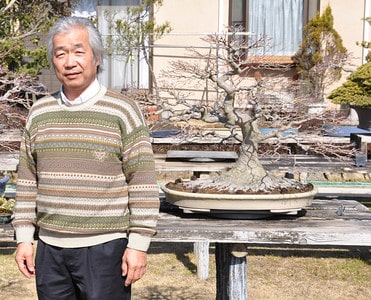
Ebihara with Japanese maple
Ebihara is crafty – he has developed a number of techniques to create good bonsai in a relatively short span of time. Some of his longer term projects are increadible, including the monster zelkova next to Boon below.
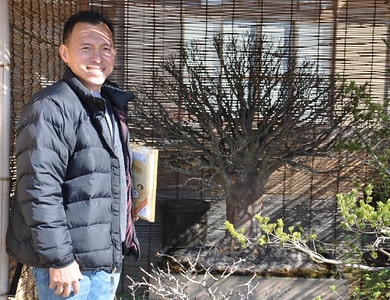
Boon with giant zelkova
Ebihara very kindly took the time to talk, at length, about what it takes to develop deciduous bonsai. Below, he points out how to improve a tree’s roots from below.
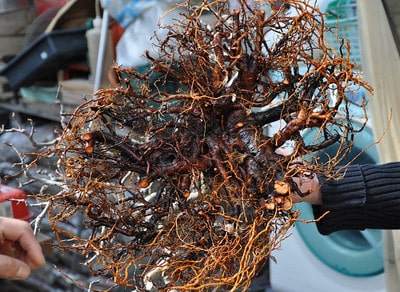
Root work
Over the years Ebihara has produced a number of outstanding trees. And unlike many bonsai professionals in Japan, he only works on his own trees, selling just a few each year (3 in 2008). Based on the number of trees he’s currently working on, he won’t run out any time soon.
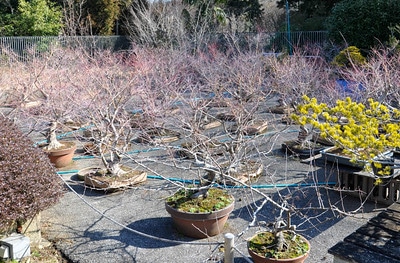
Future Japanese maple bonsai
Turns out he’s good with white pines, too. He’s working on a dozen or more giants and is nearly finished refining several others.
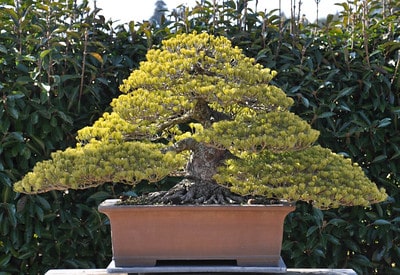
Japanese white pine
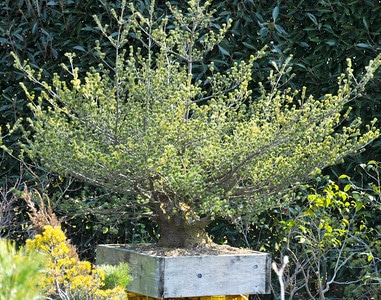
Zuisho in training
Below is a white pine he’s styling before the air layer is removed from the rest of the tree.
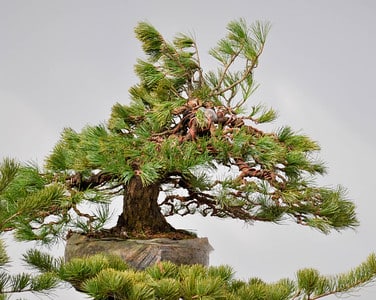
White pine air layer
His workshop, by the way, is very tidy.
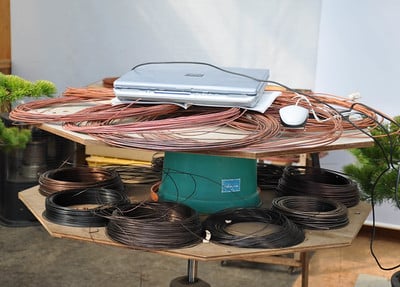
Wire caddy
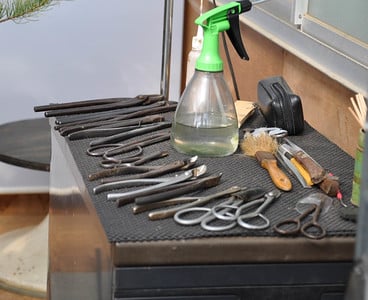
Tools
The visit to Ebihara’s garden was a super way to start a trip. And as you might surmise from the sunshine in these photos, the weather has been great.
Apparently, he dabbles in shimpaku too.
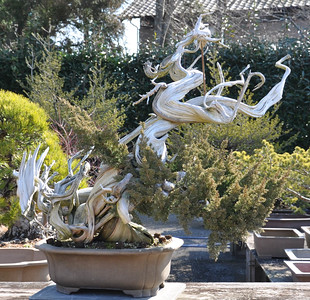
Shimpaku
Subscribe to Bonsai Tonight
New Posts Delivered Every Tuesday and Friday
Scott Straley says
Jonas,
Wonderful post, the nebari is amazing, and give someone like me who is growing younger stock lots of hope. Glad you are having a good bonsai vacation, enjoy the rest of it, along with Kokufu ten.
Scott
Janet Roth says
Hey Jonas – sounds like you’re having a nice time, and the weather is cooperating. You’ll be glad to hear that it has been non-stop rain here, and is set to go on for several more days at least. So the prospect of having to choose between watering bonsai and taking showers has perhaps receded a bit.
Say hello to everyone for me! Cheers – Janet
Neil says
Been following your blog for sometime. Excellent work & thank you for providing the information. I am very curious about the photo of the trees roots from the bottom side. What are some of the techniques used to speed the development of such a nebari? Grafting and splitting are two that come to mind. Are roots growing downward approach grafted to upper surface roots? It seems as though this could work.
Once again, Thank you.
Neil
xwires says
Hi Neil – thanks for the note. Ebihara’s basic technique doesn’t rely on splitting or grafting roots. At a fairly early stage in the tree’s development, he bareroots the tree, screws the base onto a sheet of plywood, and then spends the next several days arranging the roots, tacking each onto the board one at a time. He then pots the tree in a deep pot and lets it grow for a free years, during which time the roots begin to fuse. Another 15-20 years of development and he has the trees pictured here.
When I visited, he was working on a training DVD that explained the process in some detail. I don’t know if it was completed. Later that year, Ebihara was diagnosed with cancer and subsequently he has stopped doing professional bonsai work.